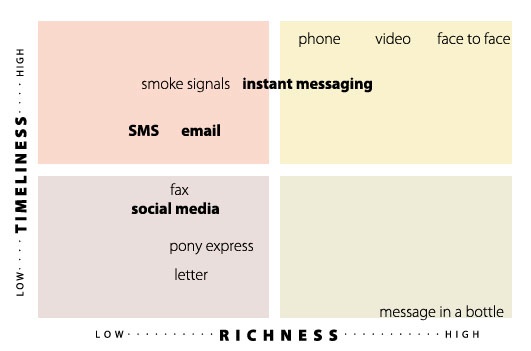1 min read
CallTower Team Training: Empowering Success On-Site and Online
Adopting new communication technology is one of the most powerful ways to help transform a business, but only if your team knows how to use it. If...
1 min read
![]() CallTower Blog Team
:
Jun 6, 2013 3:30:52 AM
CallTower Blog Team
:
Jun 6, 2013 3:30:52 AM

The last several years have seen a proliferation of communication tools: email, SMS (texting), instant messaging, social networking, and more, which are used every day by millions of people around the world.
I think it’s fair to say that we are communicating more. But are we communicating any better?
Most people think communication is a matter of transmitting information: “A” sends information to “B”. “B” might or might not acknowledge receipt of the information and might or might not ask for clarification. But as far as “A” is concerned, once s/he sends the message, s/he has communicated. In this transmission model, the most important consideration is timeliness.
More recent models of communication argue that it is a process by which two or more people come to a shared understanding. Such an understanding might be trivial: We’ll meet at the restaurant at 7 PM. But much communication is not trivial at all.
The process of reaching a mutual understanding adds an element of richness to communication. Richness has to do with a range of factors, including the relationship between the communicating parties, their experience, their values, and more. And this is why we aren’t communicating any better despite the many tools we have at our disposal.
Consider the following diagram. The more recent communication tools are highlighted.

You might disagree with exactly where I have placed the tools on this timeliness/richness scale. For example, some people have Facebook and other social media open all the time. And many collections of letters reflect an uncommon richness.
But what the diagram indicates is that the newer communication tools put a premium on timeliness. The exception is instant messaging: It’s not as effective as a phone call, video conference, or face to face meeting, but it’s better than email or SMS.
We have all had the experience of the email thread that just doesn’t do the trick, so we give up on it and make a call or go the whiteboard. Timeliness just wasn’t enough.
The key is to use the tool that’s right for the purpose and not to let one of the tools become so dominant that we use it when others would be more effective.
1 min read
Adopting new communication technology is one of the most powerful ways to help transform a business, but only if your team knows how to use it. If...
Microsoft Teams has changed how we get work done. For millions, it’s the...
In today's fast-paced business environment, effective communication is the backbone of success. Yet, many organizations remain hesitant to adopt...